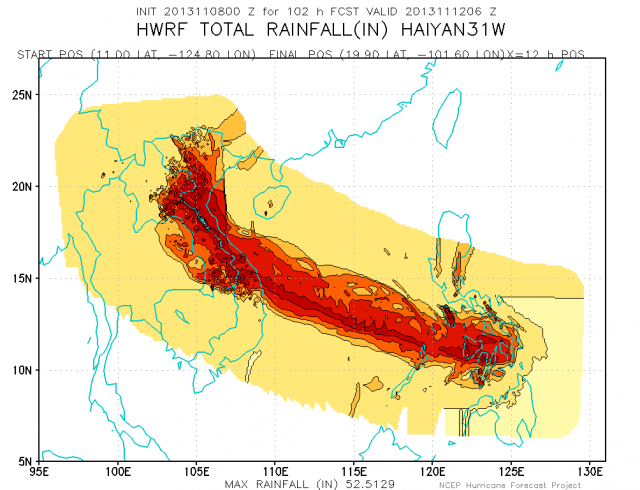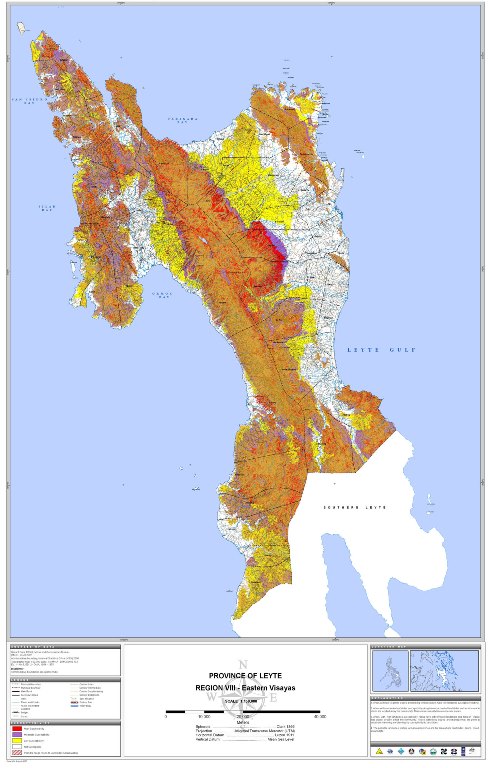8 November 2013
Landslides and typhoon Haiyan
Posted by Dave Petley
As I write typhoon Haiyan is tracking across the Philippines. Jeff Masters reports that this is likely to be the most intense landfalling tropical cyclone on record; as such the damage on the areas affected is likely to be extreme. As I have noted previously, whilst it is the wind that tends to grab the attention of the media (and wind speeds of 310 km/h are clearly devastating), most of the damage is done by water, in the form of the storm surge, waves, floods and landslides. In terms of the latter, unfortunately the island of Leyte, across which the storm has just tracked, is very landslide prone. Indeed, Leyte was the location of one of the most devastating landslides in recent times, when the Guinsaugon landslide of 2006 caused 1126 deaths:
Interestingly, the Guinsaugon landslide occurred as a result of ten days of rainfall that deposited over 2,000 mm of precipitation in total. Typhoon Haiyan is also likely to bring very high rainfall totals, although the high rate of movement of the storm means that durations should hopefully be comparatively short. This is a simulation of rainfall totals along the track of the storm from NOAA:
Note that the forecast from Typhoon Haiyan is for a peak total of 52.5 inches (1300 mm). Taking Leyte alone (and that is not the only part of the Philippines to be affected by this storm), landslide hazard levels are very high. This is a rainfall induced landslide hazard map, from the National Mapping and Resource Information Agency, for Leyte:
Note in particular the very high levels of hazard on the eastern-facing slopes of the upland areas. Due to the orographic effects, these areas are likely to have received extremely high rainfall totals. It would be a surprise to me if there are not very serious landslide problems in this area. A general idea of what might be expected from Typhoon Haiyan can be gained from revisiting the typhoon Bopha / Pablo disaster, also in the Philippines, of December 2012. We may well not get a proper idea of the magnitude of the losses in the upland areas of Leyte until tomorrow; I suspect that the impacts will be very serious.





 Dave Petley is the Vice-Chancellor of the University of Hull in the United Kingdom. His blog provides commentary and analysis of landslide events occurring worldwide, including the landslides themselves, latest research, and conferences and meetings.
Dave Petley is the Vice-Chancellor of the University of Hull in the United Kingdom. His blog provides commentary and analysis of landslide events occurring worldwide, including the landslides themselves, latest research, and conferences and meetings.